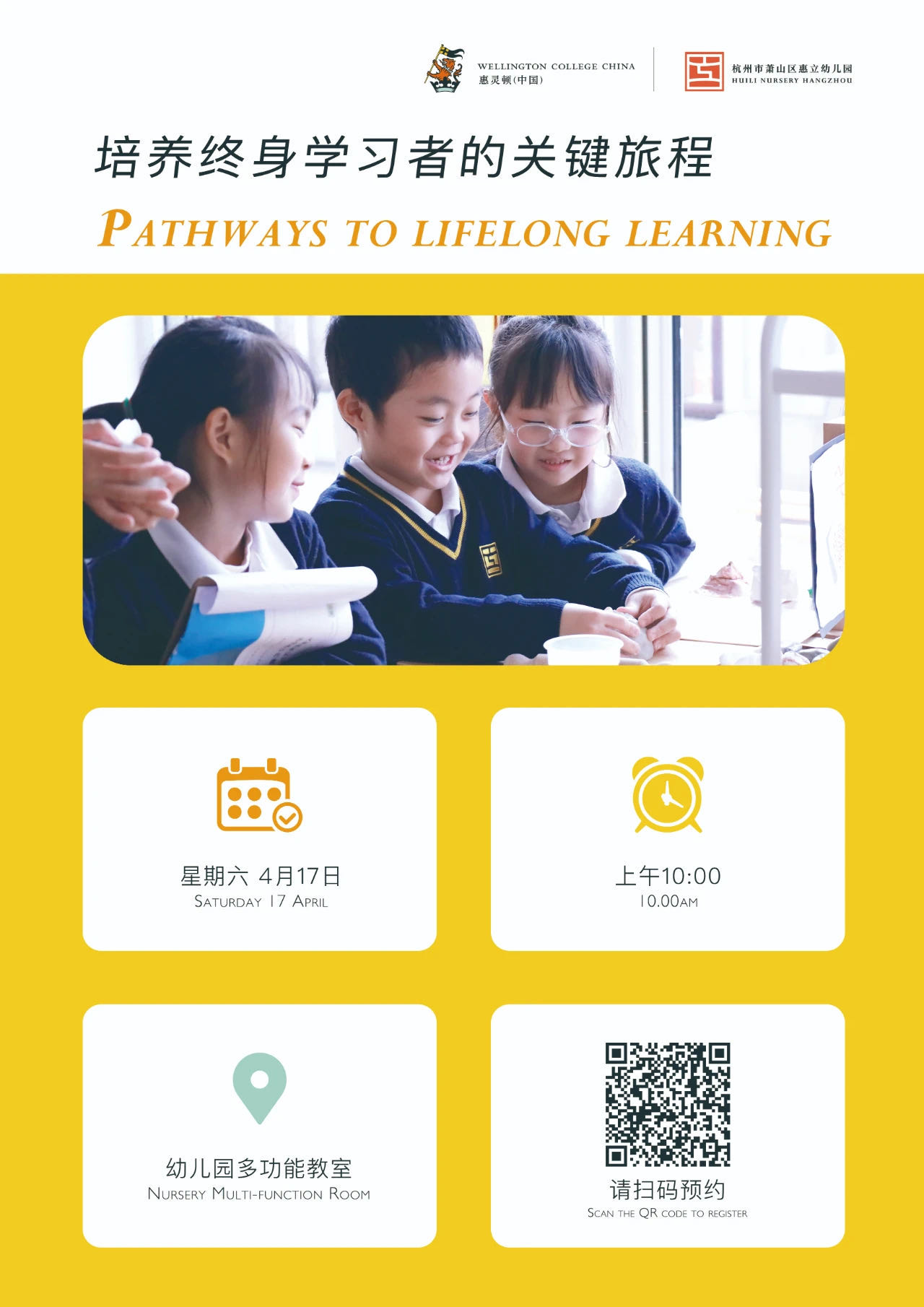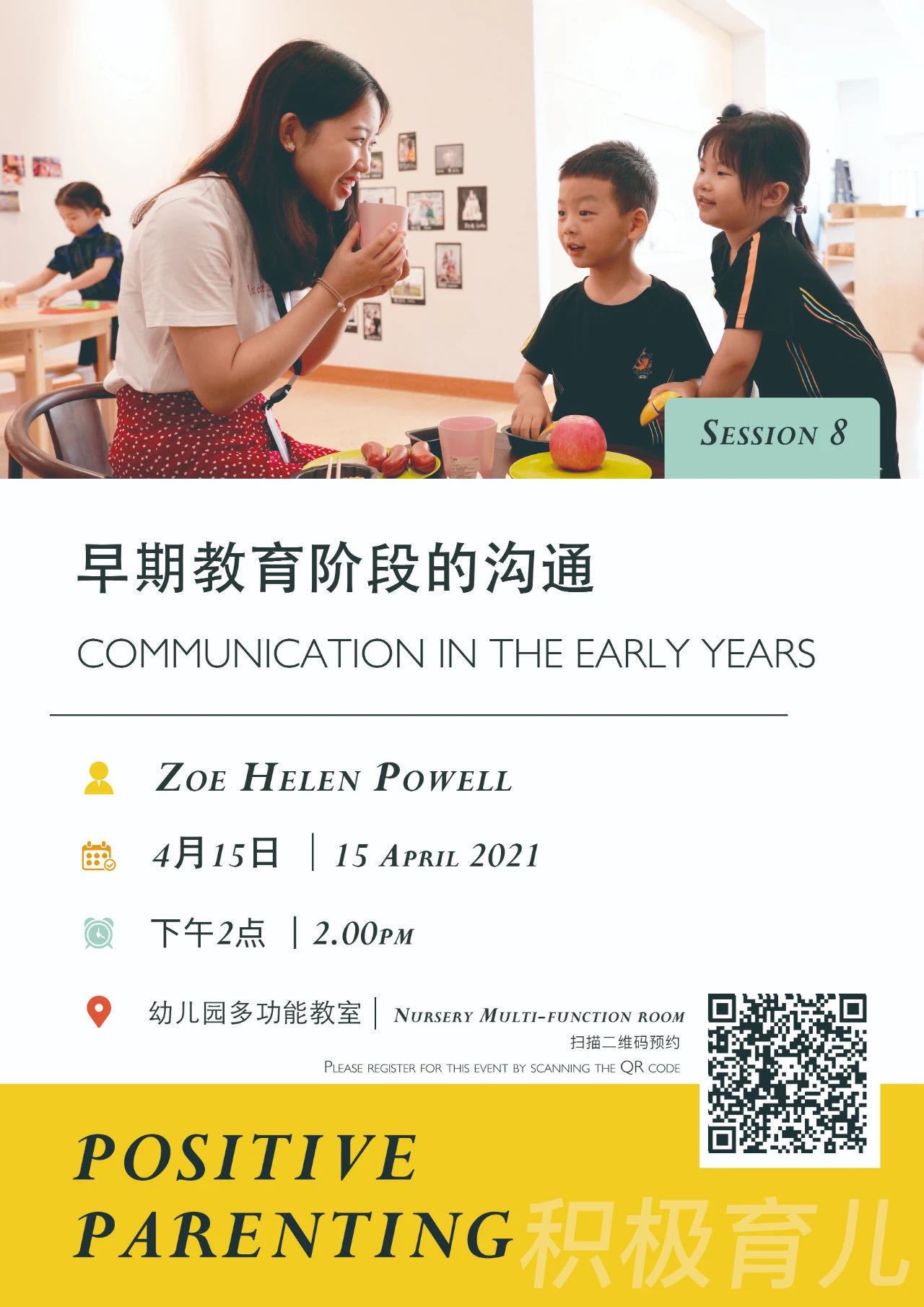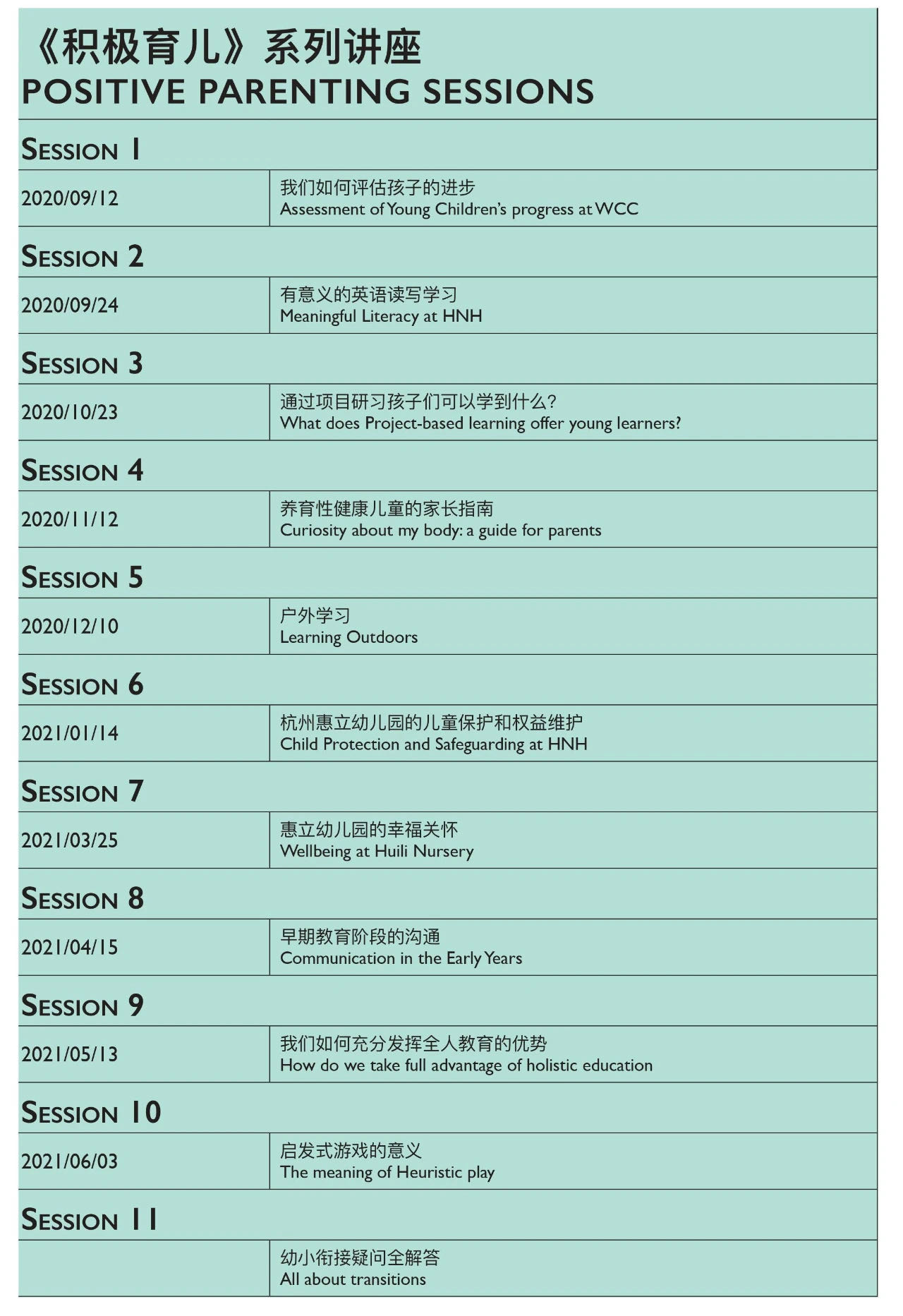

At Huili Nursery we make the most of every season. With the arrival of spring, flowers are in bloom all around us. We want children to experience that new life and as well as a sense of awe and wonder in what is happening in their world.
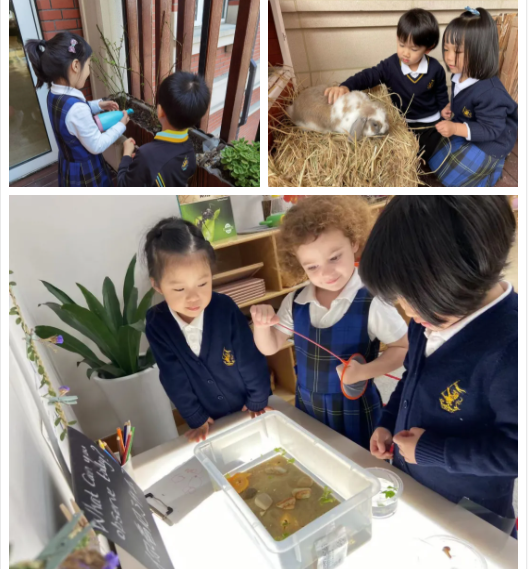
This has been happening in a variety of ways across the Nursery and I wanted to share just a few of them.
EY1 – Rabbits – One of the newest members of the HNH family, Peter the rabbit joined us this term. This beautiful and kind tempered bunny has not only delighted the children in EY1 but has also inspired great conversations and learning amongst the children. EY1 have looked at tunnels as well as what the rabbit needs to eat to survive and what will make it poorly.
EY2 – Tadpoles - EY2 have been given the important responsibility of raising tadpoles. Children have spent their time learning about the life cycles of frogs and toads as well as finding out what they need to survive. This has been supplemented by looking closely at the tadpoles, observing how they move and representing that learning in their art and play. Children have also noticed some of the tadpoles sadly did not survive – a natural part of life. This learning about the cycle of life and death is vital to their understanding and processing of the world around them.
EY3 and EY4 – Plants – The balconies of EY3 and EY4 have come alive with colour and scents as the children plant and grow a range of flowers and herbs. Children can explore these plants with a range of senses and discuss preferences with the peers and teachers. They are also able to take on the responsibility of keeping the plants alive and healthy. Plant diaries and records help children to track the passage of time and practice the ability to measure objects.
As you can see the addition of living creatures, plant or animal makes an enormous difference to our children’s education. Not just in terms of understanding the world aspect of our curriculum but in language, mathematical and even physical development.
This is something you can encourage at home. Request your own children to take a small responsibility in looking after pets you already have or buy seeds that they can be responsible for growing and taking care of.
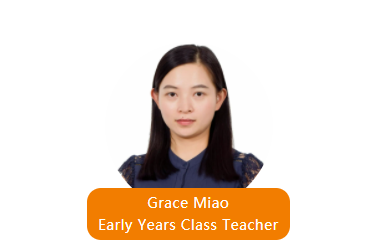
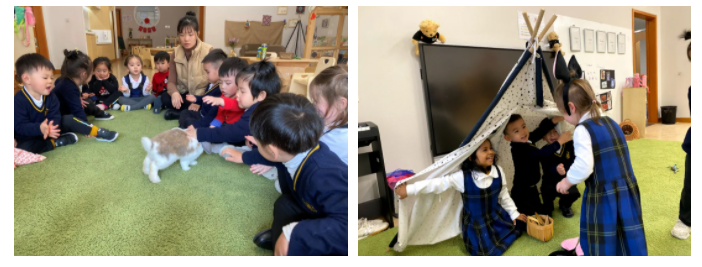
Recently, children were attracted by the bunnies in the nursery, which offered an opportunity to learn. In the language class, we are reading the story of "Little Bunny" with children. Later, children retold the vivid story by using magnetic sheets to build a solid house for the small white rabbit and using loose materials to create the image of the big bad wolf. They also tried to use props to express their understanding of the story. Children’s wellbeing and involvement have been enhanced by the activities.

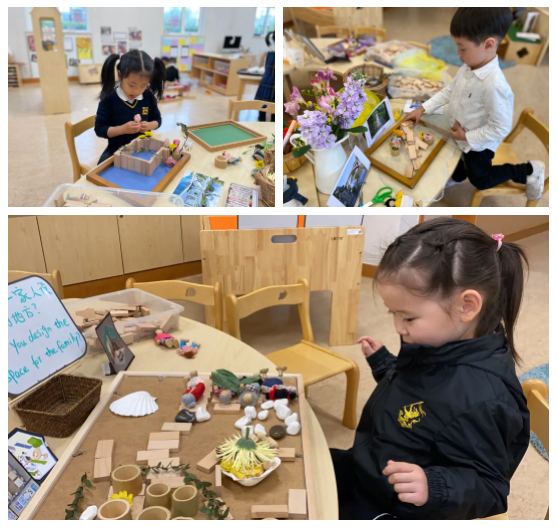
Before exploring our project regarding buildings and construction, we wanted to help children to build concepts of how to arrange spaces and a sense of direction. At the beginning, we invited children to show us their home with loose parts, such as flowers, stones, blocks and shells. They set up the spaces on the frames and explained each room’s function to us. Children can correctly use direction words in their description and present their understanding of shapes and structures. In addition, children counted how many people and pets they have at home and then decided how many materials they need. Children showed a huge interest in designing their most familiar place - home. Later, children grabbed an empty frame and brought it outside or to other areas in our classroom, designing the space on different backgrounds such as grass, silk or dirt. In doing so, they can understand how to keep the balance of their buildings. They have learnt how to arrange the layout of the space through their own thinking. This activity organically links inside to outside and children's learning journey can be extended effectively.

Since spring is coming, children in EY3B developed a strong interest in changes happening to plants during this season.
When playing outside, children noticed that some small fruits had dropped from the camphor tree, which looked like blueberries. They picked them up, peeled them carefully and found little seeds inside. Children collected 113 little seeds and brought them back to the classroom to observe.
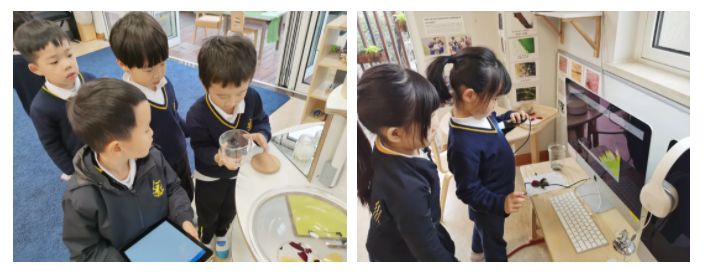
Ms. Monica provided a digital microscope for children to better observe the seeds and other small items, and introduced how to use it. Children were very excited to come to our science lab and observe their skin, hair, roses, veins on leaves, pinecones and sand.. “Come and see this. The seed under the microscope is just like the surface of the moon!”
As children are very keen to explore different kinds of plants, Ms. Monica also introduced an app called iFlower which helps children identify plants. Children used this app to take photographs of the plants in the classroom and outdoor environment, uploaded them and found their names. They learnt more about plants such as camphor trees, Mexican mint, Osmanthus and Chinese roses, through looking at the photographs and videos they found on the app.
EY3B children have shown great capabilities of proactive exploring, curiosity towards the plants and the microworld. They can also use age-appropriate technologies to access information they are interested in and share the happiness they gained with teachers and their friends.

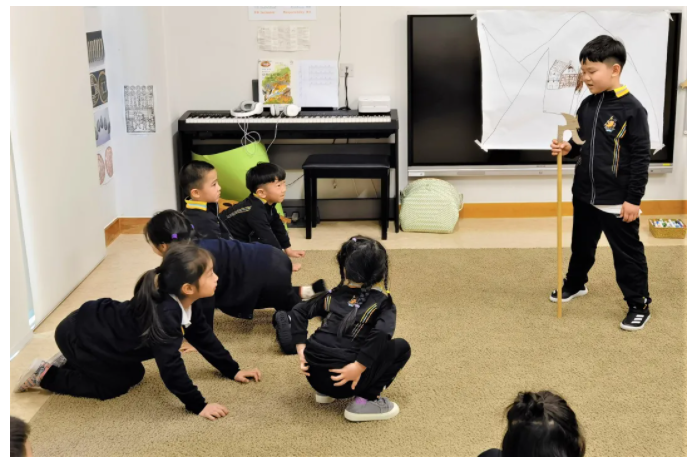
We provide children with a wealth of stories both at school and at home. Most children will read by themselves or with adults. Before training in Drama in Education, I felt that reading is a simple thing to attract children, as long as we were telling the story vividly and joining in with acting. After learning Drama in Education, our classes have become more in-depth. Sometimes, we choose a very conflicted chapter rather than the whole book to discuss, act, adapt and reproduce.
This week we chose the book The Night of the Magic Forest for our Drama in Education class. Children use their imagination and real-life experience to make the characters of two brothers more completely. For example, what does Raison usually do or say that makes animals run away when they see him? What does Raison's and Mason's rooms look like? During this process, children express ideas based on their own life experience. We can get to know their inner world and understand their daily behaviour much better. As an adult, we are trying to help the children to explore the complexity of the world rather than change them.
Next week, the nursery will hold Theatre in Drama The Other Side of Me by Drama Rainbow, which will bring a different experience to the children.

